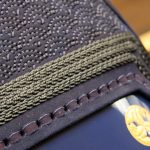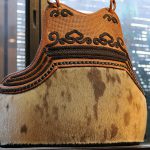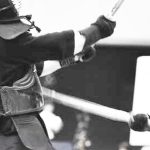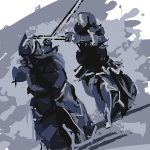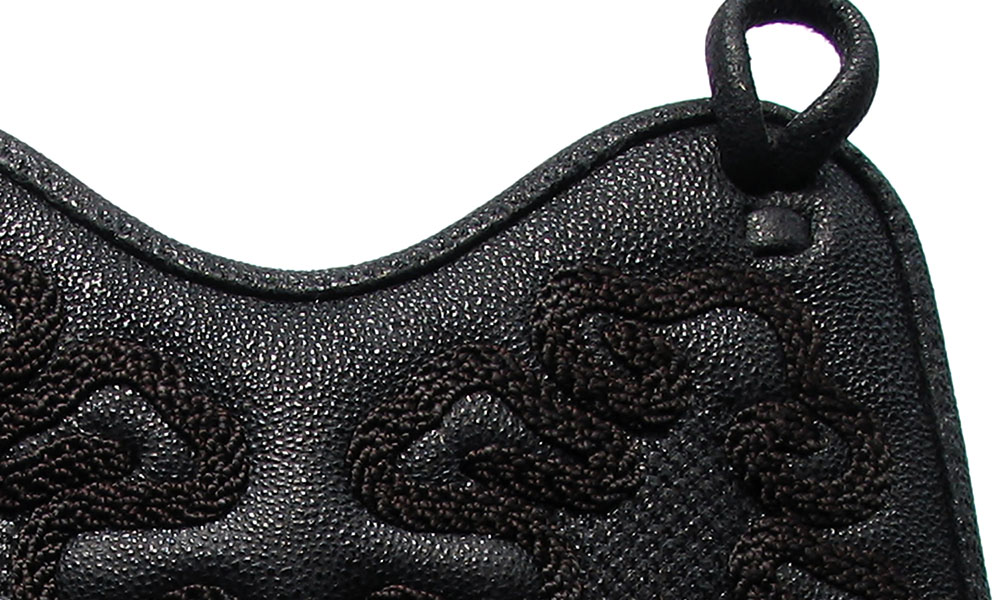
The Kendo Mune has some decorations around the chest other than the beam of light. It is woven around the beam in a Kumo pattern (cloud), Matsu pattern (pine tree), or a combination of the two.
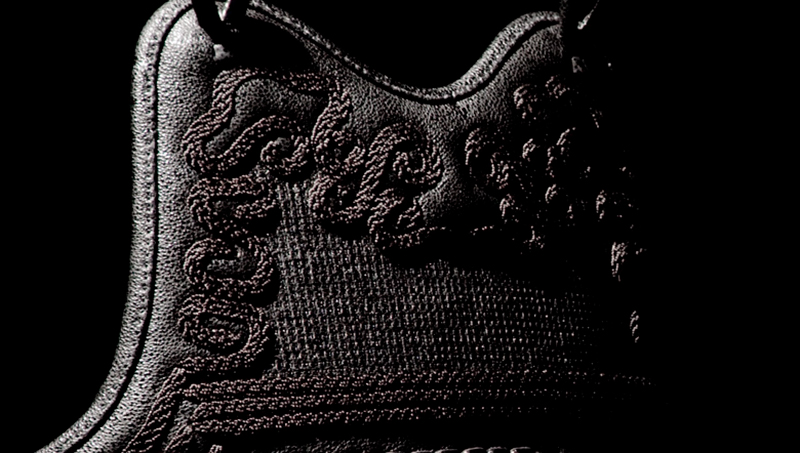
The Kumo pattern has two lines meeting together from left and right before creating a whirlwind shape after the cross. This is the traditional Kumo pattern, a design of nature cherished by the Japanese from long ago. The Matsu pattern is also a design passed on through the generations, characterized by its idiosyncratic shape like a slightly-crushed UFO. The most popular Matsu shape for the vest is called sangai-Matsui (three-story pine), a pattern with three pines lie on top of one another.

Shapes based on the Matsu or Kumo have been in use since ancient times, and can be found not only on Kendo equipment but also on Kimono, Fusuma (the sliding door with paper decorations), and family crests. These have been passed down as classical designs, and when considering the design of Kendo equipment, knowing the meaning behind these designs can help one better understand the original function and purpose of the equipment.
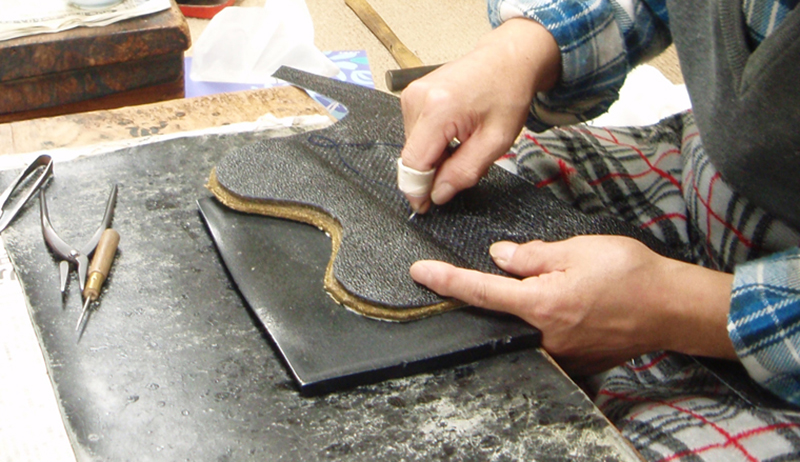
We call them “Kazari(decorations)”, but the original purpose is not decorative; it has always been about “safety”. The design is placed above the chest, and it is tasked with preventing the opponent’s sword from approaching the throat. Though being decorative, to protect the throat from strong thrust it must be sewn on tightly. The Kumo and Matsu decorations on good equipment made with traditional methods are made sterically applying a strong twist. This is a necessary part of the job to improve safety.
The central part, right below the throat, is stretched out horizontally to catch the plunging sword-edge at a broader range. It is also made with a slight angle in order to cause the sword to miss the throat. As we can see, the Kendo equipment is truly a protective equipment, and even the decorations around the chest are not simply decorations.
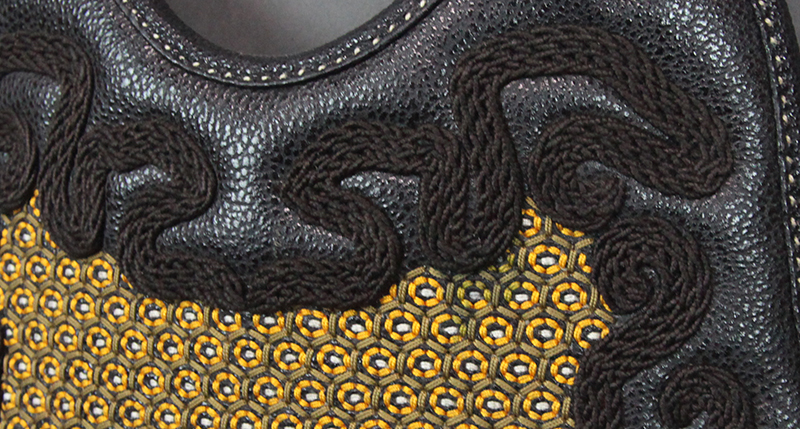
Recently, however, the pursuit of designability and lighter equipment has caused a decline in the popularity of the Kumo and Matsu patterns. Today the “betasashi”, a vest without chest decorations, has become common. With no light beam or chest decorations, the chest is left smooth and the sword is more likely to connect with the throat compared to vests with chest decorations.

Especially for biggers, when buying new Kendo equipment, a vest with chest decorations is strongly recommended. Even if you are wearing “betasashi”, swapping with one that has chest decorations will greatly increase your safety. Even if it is somewhat costly, the extra protection from any risk should be worth it.
Through understanding the purpose of the designs, perhaps we can pursue Kendo with greater safety and joy.
 | Did you like what you've just read? Check this out. |



